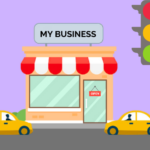You may come across a lot of acronyms on the internet. CSS, DNS, HTML, FTP…we could list is endless. Among the many that are out there “URL’ is one acronym that we’re sure that you’ve come across. And you could be asking yourself, “What is a website URL?” “What does URL stand for?” and “What does URL stand for?”
We’ll start with a basic definition of “what is a website URL?” in this post. Then we’ll go through the three most significant components of a URL’s structure and how each one relates to your WordPress site.
What is a website URL?
Abbreviated as URL, a Uniform Resource Locator is a way of identifying the location of a file on the internet. Every URL is made up of several pieces, and the way yours are constructed will have a range of consequences on the security and SEO of your site (SEO). URLs are used not only on websites, but also to download images, videos, software programs, and other types of files that are hosted on a server.
For example, if you enter https://shergroup.com/solutions/ in your address bar, your web browser will take you to the hub of our solution. But if you just enter https://shergroup.com/, you get taken to the Shergroup homepage.
Many people don’t give URLs much thought beyond memorising the ones that go to their favourite websites and typing them into the address bar of their browser. However, if you own a website or want to construct one, it’s a good idea to know what a URL is and how URLs work behind the scenes.
It indicates the position of a web resource in the same way that a street address identifies a person’s actual location; as a result, a URL is frequently referred to as a “web address.”
A URL contains the following information:
- The protocol is used to access the resource.
- The location of the server (whether by IP address or domain name).
- The port number on the server (optional).
- The location of the resource in the directory structure of the server.
- A fragment identifier (optional).
A uniform resource identifier (URL) is a sort of URL (URI). Even though it is technically wrong, the word URI isn’t utilised or is used interchangeably with URL in everyday usage.
Your guide to understanding website URLs (3 key parts)
We’ll look at the three most crucial aspects of a URL (Uniform Resource Locator) for typical users in the following sections. When put together, they should be able to answer the question, “What is a website URL?” Slashes separate each of them, making it easier to separate them in your mind.
The protocol
Consider the following URL:
The first part of this address is the simplest to overlook. You’re probably so used to seeing http:// and https:// at the start of every URL that you don’t think about it. The ‘protocol’ of the URL, on the other hand, is more essential than you might imagine.
The protocol instructs your browser on how to communicate with the server of a website in order to send and receive data. To put it another way, it’s what makes a URL work in the first place. Most websites have used Hypertext Transfer Protocol (HTTP) in the past, and you’ll still encounter this version on the internet.
However, there has been a recent push for Hypertext Transfer Protocol Secure to be widely adopted (HTTPS). While this protocol is similar to HTTP, it is a far more secure solution that encrypts data transferred back and forth between the browser and the webserver. That’s why the majority of browsers display a green security padlock on it:
Example of https
Fortunately, if you’re a WordPress user, ensuring that your site runs on HTTPS is straightforward. Check out our guide to adopting HTTPS for more information. All you’ll need is a free Let’s Encrypt certificate and the Simple SSL plugin (which is also free).
2. The domain name
Let’s go back to the full URL for a moment:
The next part is the most identifiable element of a web address – the ‘domain name’. In this case, it’s shergroup.com (our website!). A domain name is a unique identifier for a website that, if nothing else is added to the end, will usually direct you to the home page.
A domain name, of course, is made up of two smaller components. The website’s name comes first, followed by the TLD (Top-Level Domain) (TLD). The.com,.org, and.net designations (among others) at the end of the domain name are referred to as the latter term.
When you’re creating a new website, it’s worth taking some time to think about the domain name you’ll use. It should be one-of-a-kind and attention-getting, while also being straightforward to recall. You can use a generator like Domain Wheel to gather ideas and check what’s available if you need help coming up with a compelling domain name for your WordPress site:
Your TLD selection is also important. Sticking with.com is the best solution for many websites. It’s the TLD that most internet users are familiar with and expect, thus it’ll be the easiest for them to remember. However, selecting a TLD that is more appropriate for your specialisation or field can be advantageous. There are hundreds of TLD alternatives (many of which are region- or industry-specific), so if you want to go beyond a simple.com, you’ll have lots of options.
3. The path
If you just wanted to visit our website’s front page, all you would need are the protocol and the domain name: https://shergroup.com. But each page or file on a website also has its URL. Once again, here’s what it looks like:
The ‘path’ is the section after the TLD. This is due to the fact that it leads the browser to a certain website page. In this case, it takes you to our site, then to a specific post: How to Find and Fix Broken Links in WordPress Automatically. The very last component is commonly referred to as a URL’slug.’
As a WordPress user, you have a lot of control over how your URL routes are constructed. You can alter your permalinks, or the individual links to each page and post, in WordPress. Go to Settings > Permalinks on your dashboard to find this option.
The decisions you make here will affect how ‘clickable’ your content appears to potential visitors, as well as the general SEO of your site. Take a look at our complete guide to modifying your WordPress site’s permalinks and choosing an appropriate structure for more information.
Recap |
To recap, these are the three basic elements of a website URL:
- The protocol – HTTP or HTTPS.
- The domain name (including the TLD) that identifies a site.
- The path leads to a specific web page.
We didn’t go over everything about URLs in this article, such as the presence of subdomains, which are domains that are part of another domain, such as en.wikipedia.org. The en signifies that you are viewing Wikipedia in English.
Fun fact | As you surely know, www. stands for the worldwide web, and the URL you see right now in the address bar may or may not include it. This is because some web browsers, including Google Chrome, ignore it when displaying the URL. If you write the www. section in, it still takes you to the site you want to see, but it doesn’t display it directly.
Summing-up
Website development may seem like an easy task from the outside but there are numerous factors together that make up a good website. From functionality to appearance everything has to be in sync with each other. This uniformity together with every other aspect builds your online shopping address i.e. your website. A better understanding of the complex URL structure is a smart move, it helps you to make the best choices available for your site. If you’re a start-up business and looking for a good website development agency or an established business set up looking to revamp the look of your website, then contact Shergroup.
We have designed some fabulous digital marketing packages for you. You can select from our list of packages that help you gain the maximum mileage. Our experts will look into your requirements and deliver exactly what you have in mind. You can call our business solutions advisors to know about our packages in detail. We love to see businesses grow and that’s the reason why we are the most loved business solutions provider.
Click here to make a purchase | https://shergroup.com/marketing-sales-solutions/design-your-website/
You can reach us |
By Phone | 020 3588 4240
Website | www.shergroup.com and you can chat to us from here
Email | [email protected]
Facebook | Check out Shergroup on this channel and message us
Twitter | Check out ShergroupChat on this channel and message us
LINKEDIN | Check out Shergroup’s LINKEDIN feed – and please FOLLOW us!
Instagram | Check out ShergroupChatter and follow us!






